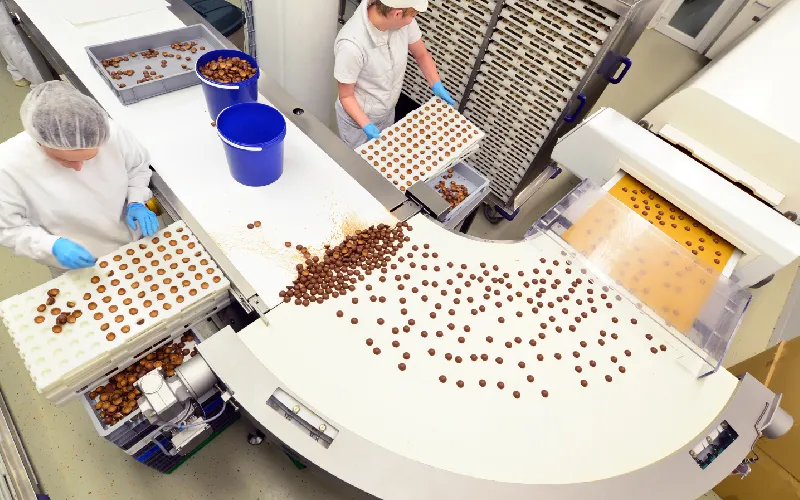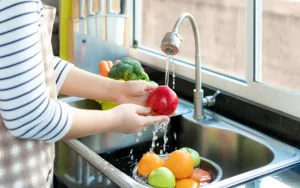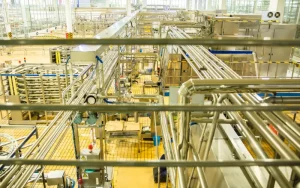Optimizing food manufacturing improves industry efficiency and performance. In this way, competitive advantage is maintained, and market demand is met quickly. To do this, production processes must be optimized to create more without losing quality.
Here is how to improve such processes in the food industry and some tips for maintenance during manufacturing.
How to improve food manufacturing?
Food industry processes seek to modify the initial conditions of a natural food, such as fruits, to generate a different product, such as concentrates. In this way, it is possible to enhance flavors, improve preservation or increase its nutritional value.
Improving these processes involves optimizing food production and maintenance. This includes everything from raw material handling and storage to packaging and final presentation of the finished, ready-to-eat product. In fruit processing, certain steps can be improved, what are they?
Raw material handling and product storage
Raw material handling should be done through mechanization, continuous processing and automation. By using self-propelled transport, conveyor belts and forklifts for fruit washing and disinfection, manual fruit handling is minimized.
In addition, the product is usually stored in silos, tanks, warehouses, or cold stores. Such facilities must meet the appropriate handling and preservation conditions.
Extraction process in food manufacturing
This process consists of separating the fruit pulp from the skin, seeds, and other elements. To do this, it is advisable to use automated methods such as crushing, mashing, or grinding. Once the pulping is done, the fruit will go through a cooking process and, if necessary, direct or indirect filtering.
Food concentration and pasteurization process
This process is critical in concentration and food manufacturing, since it can modify its organoleptic properties. Cooking should be carried out in hermetically sealed containers to concentrate the product through a rapid thermal shock. This will prevent the loss of flavors and substances.
In addition, pasteurization is a fundamental heat treatment for food products such as pulps and juices. This must be carried out with optimized equipment to extend the shelf life of the product by reducing the microorganisms in the fruit.
Preservation processes in food manufacturing
Avoiding spoilage of finished products is important to maintain their quality. For that, there are five methods that, today, work in an optimized way:
- Radiation sterilization.
- Antibiotic sterilization.
- Chemical action.
- Dehydration.
- Refrigeration.
The first three are used to destroy microbes, while the others are limited to inhibiting their development. During food manufacturing, products are preserved by these methods to avoid contamination.
Packaging and final presentation of products
Food packaging methods are canning, aseptic packaging and freezer packaging. For fruits and fruit products, the conventional method is aseptic packaging. In this, the food container and the closure device are sterilized separately, and the filling and closing operations are carried out in a sterile atmosphere. This ensures optimum product quality.
The major advances in optimization at this stage are focused on the treatment of HTST and UHT sterilized liquids. In these, the product is heated at a high temperature for a few seconds to extend the expiration date. It is then packaged in its final presentation, stored in suitable preservation conditions and shipped to the customer.
Tips for maintenance in food manufacturing
Maintenance in the food industry is one of the most important activities in this sector. It focuses on good manufacturing practices (GMP) covering every aspect of food production.
Such regulations focus on protecting products from any risks, such as adulteration, cross-contamination and mislabeling. In addition, its implementation can help maintain food safety. Some tips to keep in mind are (FDA, 2018):
- Maintain clean and orderly facilities.
- Use quality machinery and proper maintenance of equipment.
- Use automated production lines.
- Comply with current sanitary standards, guaranteeing hygiene, safety and traceability. These are established by the International Organization for Standardization (ISO).
- Avoid inefficient workflows to minimize production interruptions. This causes losses, due to the expiration of raw materials and products.
- Apply best practices in quality and risk control processes.
- Comply with the necessary protocols for IFS, HACCP and FSPCA certification.
Knowing the food manufacturing process helps producers to improve the processing of fruits and their derivatives. This is because the optimization of the stages guarantees the conservation and safety of the product. Therefore, it is necessary to follow these tips and comply with good manufacturing practices to maximize production efficiency.
References
- Amendola, L. (2020). 5 Tips to optimize food and beverage production processes supported by asset management Dr. Luigi Amendola, PhD CEO & Interna.
- Esteban, C. (2021). 10 consejos para agilizar tu proceso de producción. Deal II.
- FAO. (n.d.). Chapter 5: Processes.
- FDA. (2018). Good manufacturing practices (GMPs) for the 21st century for food processing (2004 study).
- FDA (2023). CFR – Code of Federal Regulations Title 21.







